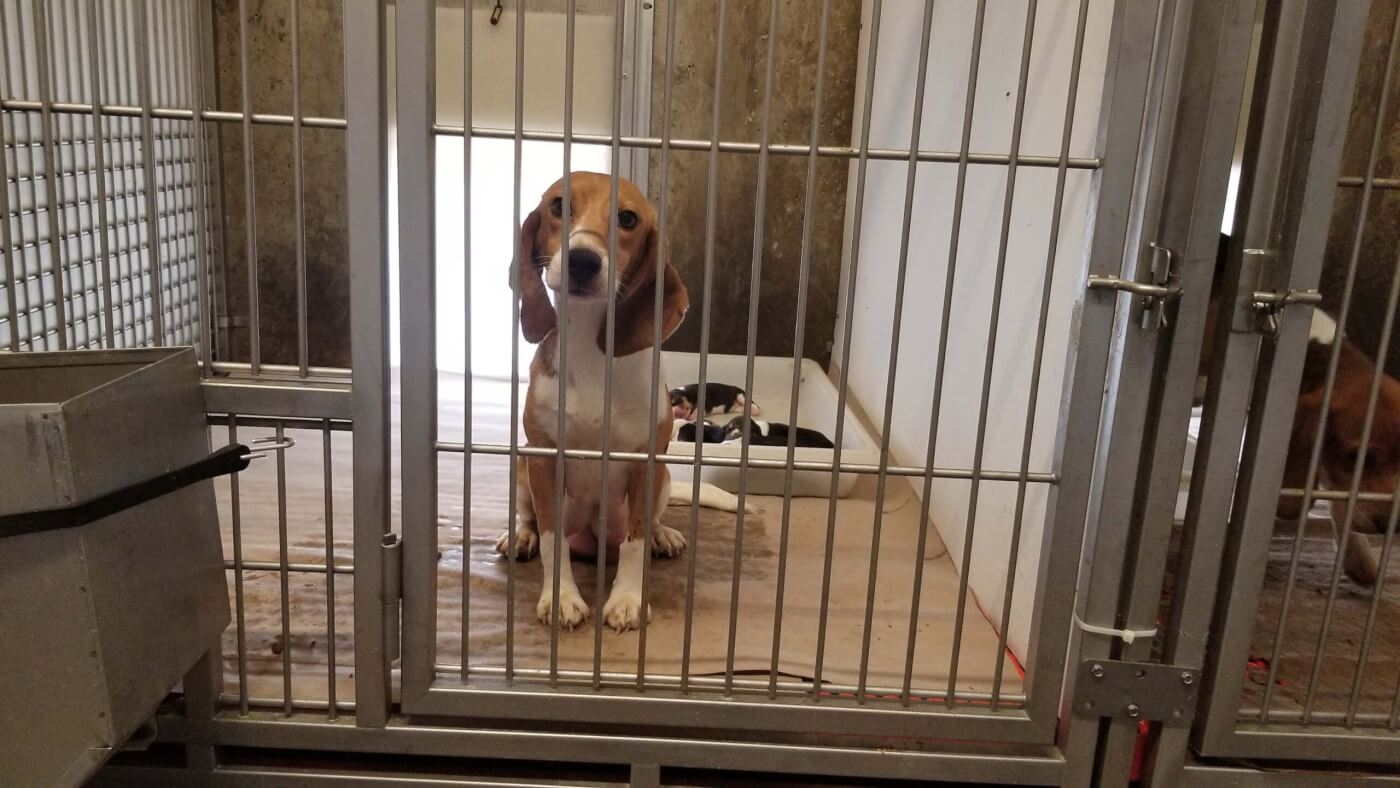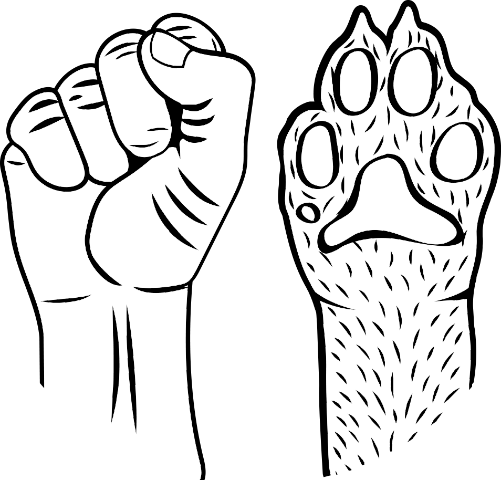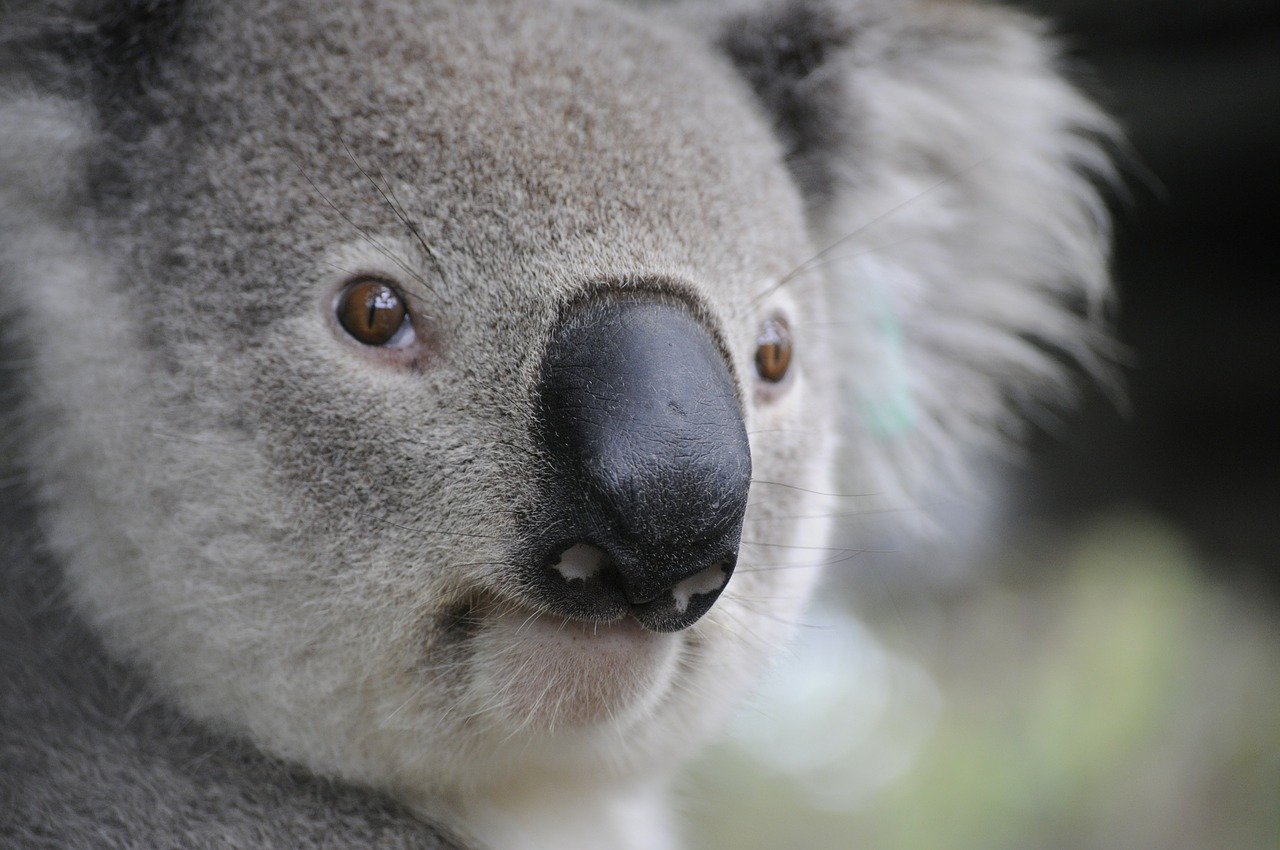
Why Eating Meat Is Killing Koalas
Australia is famous for unique wildlife, and one of our most recognisable animals is the koala. We’re accustomed to seeing their furry faces on souvenirs, in advertising campaigns, and in bushfire-related coverage. But they face another, less obvious threat: farming other animals for meat kills koalas, too. Their homes beneath their paws are being cut down to make room for breeding and feeding cattle and sheep. Koalas – left without a habitat and often injured from a violent deforestation process – have little hope for survival.

An Appetite for Destruction
Every beef burger, steak, or minced-meat meal creates a crisis for biodiversity. Australian farmers use around 54% of land– a huge 4 million square kilometres – to graze animals for their flesh, skin, and secretions. Only 23% of our land is earmarked for conservation.
Preparing land for farming animals is not as simple as it may sound – it often involves razing native forestry, which destroys the habitats of animals who live there, like koalas. A report by the World Wildlife Fund and RSPCA Queensland found that Australia ranks among the world’s worst deforestation hotspots, alongside Brazil, Congo, Indonesia, and New Guinea. Most of this deforestation is done for grazing cows and sheep.
Dr Martin Taylor, the senior scientist with WWF Australia, told the ABC programme Hack the following:
People do see their local favourite patch of bush being bulldozed for a housing or industrial estate, or a road …. That turns out to be a small percentage of the total destruction in Eastern Australia. Most of it is out bush, far from the public gaze, and most people don’t know it’s going on.
He also noted that “[e]ighty-five per cent of it is just for beef cattle pasture or for sheep pasture”.
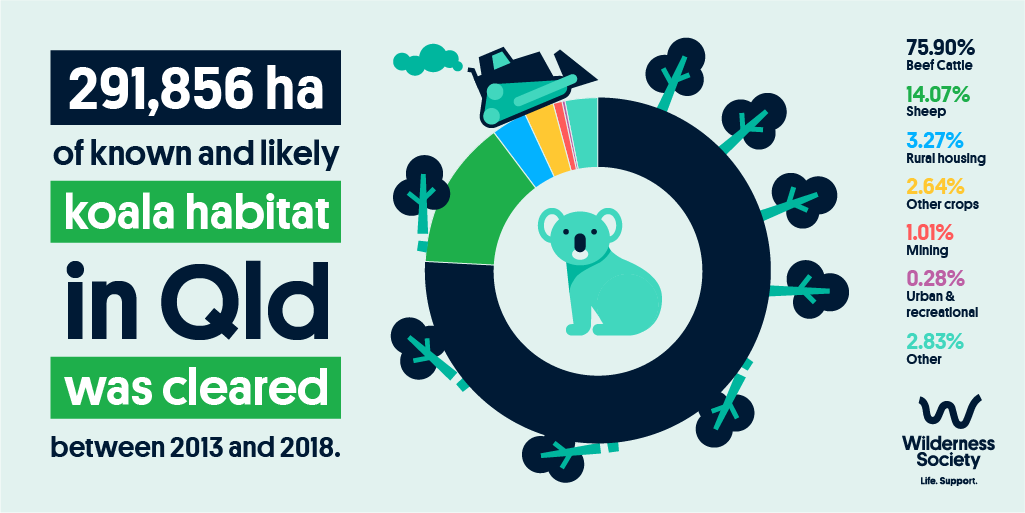
No matter where we look in our sunburnt country, the lethal impact of meat is crystal clear. In Queensland between 1988 and 2009, an average of 410,000 hectares were cleared per year. Less than 2% of trees cleared during this period were used for timber, and 93% of the clearing was to establish pasture for grazing animals. The Queensland government’s Statewide Landcover and Trees Study Summary Report: 2016–17 and 2017–18 found that over 90% of the clearing recorded between 2016 and 2018 was for “pasture”. The destruction in our Sunshine State also affects the beleaguered Great Barrier Reef catchment: the Wilderness Society found that 90% of the land clearing in the region was attributable to the beef industry.
In New South Wales, a 2020 report commissioned by the government found that local land clearing – described as “thinning for pasture expansion” – is putting biodiversity at risk.
In late 2019 in many of our states, wildlife suffered in devastating fires. Up to a billion native animals died, including thousands of koalas. Many of the survivors, faced with lost habitat and resources, had a difficult recovery. As the nation – and our overseas friends – frantically fundraised for koalas, meat farmers went right back to destroying their homes and taking their lives. In February 2020, an investigation found that at least 40 koalas had been found dead and more injured after a sheep farmer in Victoria bulldozed a blue gum plantation to turn the land into animal-grazing pasture. Meat kills – in even more ways than we may think.
The few koalas who manage to keep their homes and their lives after traumatic deforestation often endure additional stress when forced to co-exist with cows, whom they find intimidating.
Food Becomes Feed for Farmed Animals
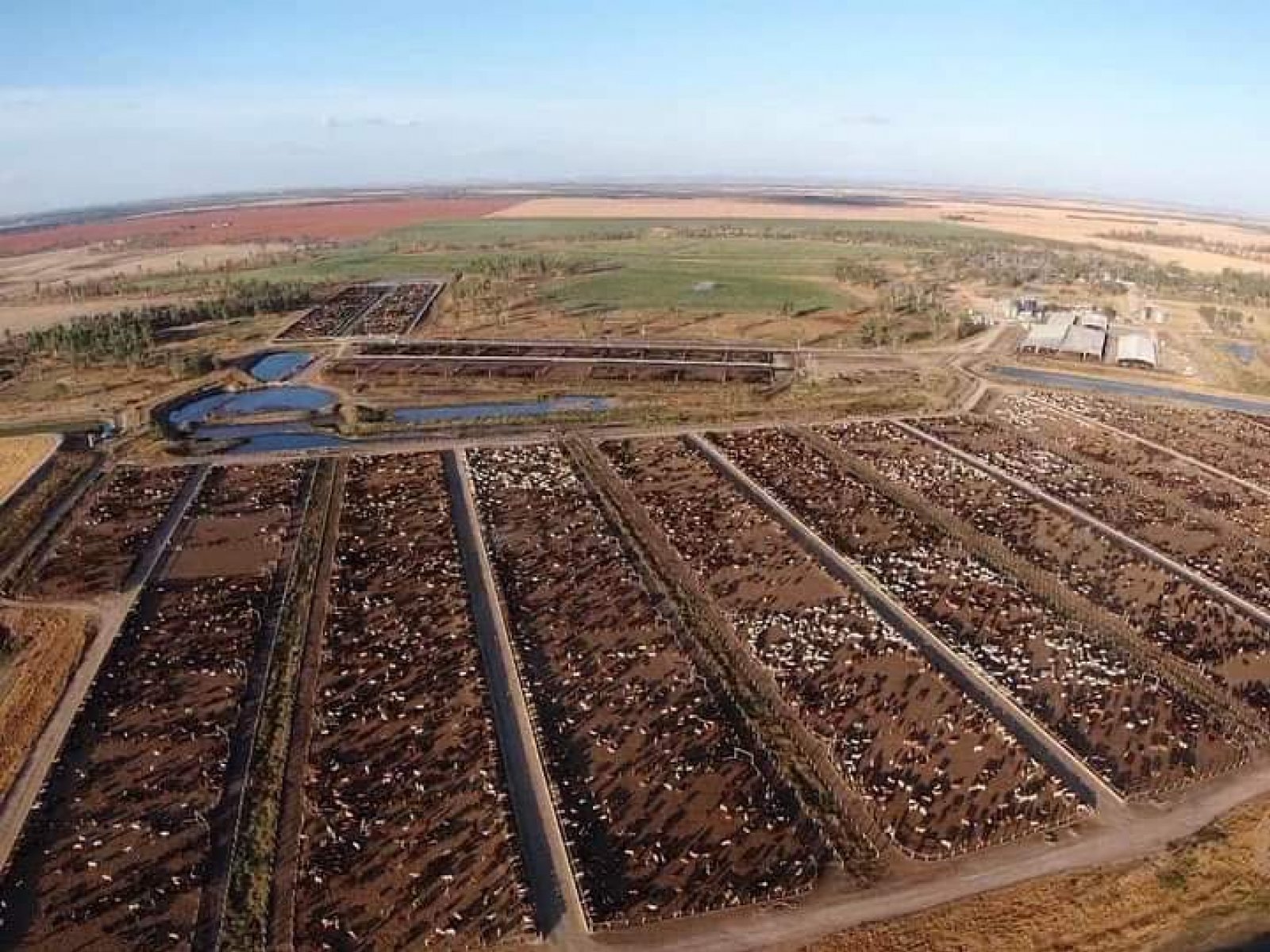
Australian farms are large operations that take a heavy toll on the environment. Gone are the days when cows and sheep were raised on pasture alone. Instead, almost two-thirds of domestic market grains – including wheat, barley, and sorghum – are commandeered by animal feed producers. Crops that are fit for human consumption or grown on land that could otherwise produce human-grade crops are sent to cattle feedlots, dairies, piggeries, and poultry producers or fed to pasture-raised animals during winter and times of drought.
In order to meet the demand for meat, cattle feedlots are becoming ever more common in Australia: 80% of beef sold in major domestic supermarkets is sourced from the feedlot sector. There, the animals are constrained to muddy, faeces-filled yards, where their restricted movement and constant access to fodder mean they put on weight quickly.
Smart, thoughtful cows languish in these bleak feedlots and often develop health conditions such as footrot, botulism, respiratory disease, and liver abscesses from unhygienic conditions. We could end all this suffering by using the same land to grow crops which could more than adequately feed us, without treating cows – and koalas – as collateral damage.
There’s Nothing Dinky-Di About Biodiversity Destruction
Koalas are hardly the only animals losing their homes and lives to land clearing. Since colonisation, Australia has seen more loss of biodiversity than any other continent and still has one of the highest rates globally, according to the Melbourne Sustainable Society Institute.
Tree clearing in Queensland alone is estimated to kill 34 million animals each year, including 900,000 mammals, 2.6 million birds, and 30.6 million reptiles. Our beloved Australia – a richly biodiverse continent populated by koalas, possums, gliders, cockatoos, goannas, dragons, skinks, and geckos – is now just a fading memory in our rear-view mirror, obscured by scores of destructive farming practices.
We must not forget that cows and lambs don’t want to be raised on this deforested land. Instead of living with their families in social groups, these sensitive animals are deprived of meaningful relationships throughout their short lives. Most are just babies when they’re trucked to the slaughterhouse to be dismembered piece by piece and packaged into neatly cling-wrapped parcels for sale.
Killing Animals Is Killing Our Planet
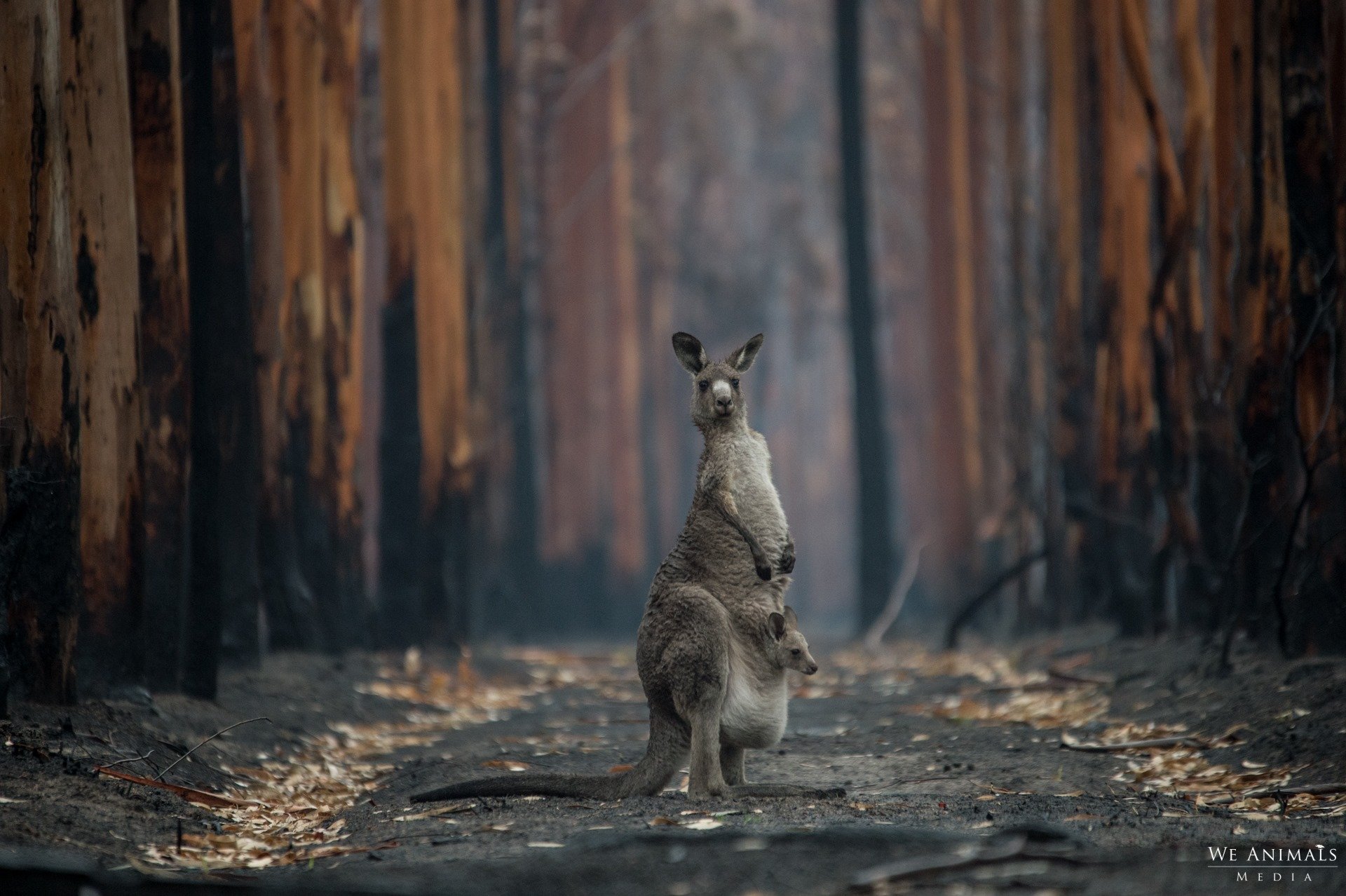
Animal agriculture is the leading cause of land clearing, but its impact is much wider. Farming animals for food is one of the leading contributors of greenhouse-gas emissions and plays a major role in climate change. Shamefully, Australia has one of the highest greenhouse-gas emissions per capita of any nation. Ruminant animals release potent greenhouse gases like methane and nitrous oxide, which have many times the planet-heating potential of carbon. Climate change is also influencing the frequency and severity of dangerous bushfire conditions in Australia, as seen in early 2020 when more than 17 million hectares of land burned and more than one billion animals were killed.
Scientists agree that we must urgently move away from animal agriculture to avoid disastrous climate change – Oxford University has declared that going vegan is the “single biggest way” to reduce an individual’s environmental impact on the Earth. The research found that if we were to reject meat and dairy, global land used for farming could be reduced by more than 75% and still feed the world.
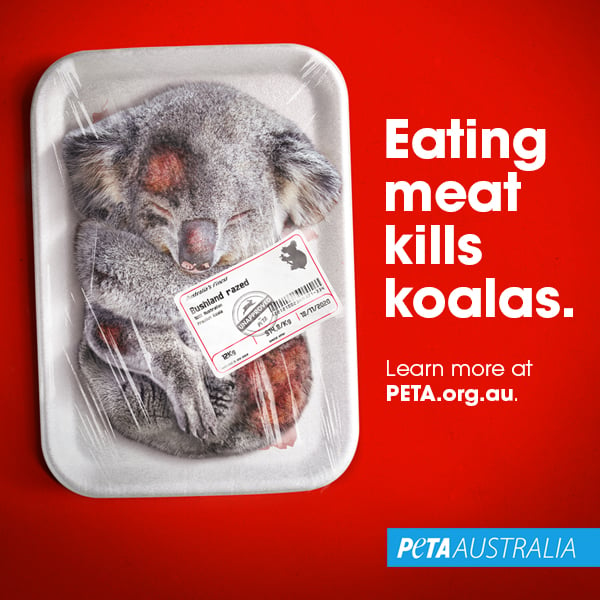
Help Koalas (and Other Animals) Three Meals per Day
Recently, politicians in New South Wales battled over a piece of legislation that focused on koala habitats. The leader of the National Party argued that the new guidelines, which make it more difficult to clear land, are “a nail in the coffin for farmers”.
Whenever animals stand between businesses and profits, they suffer. For so long as there is demand for meat, vulnerable koalas – along with scores of other animals – will be killed or left to languish without suitable food or homes.
We don’t have to wait for protective legislation to help koalas. We can act to save them and their homes three times a day, when we sit down to eat.
Eating meat and other animal-derived food is often considered a “personal choice” – but this choice forces all of us to face a devastating future. Eating meat kills billions of sentient beings and devastates the planet we call home. We can and must pave the way towards a greener, kinder future.
Are you ready to take the first steps?
Animals Are Suffering in Laboratories – Help Save Them Now
